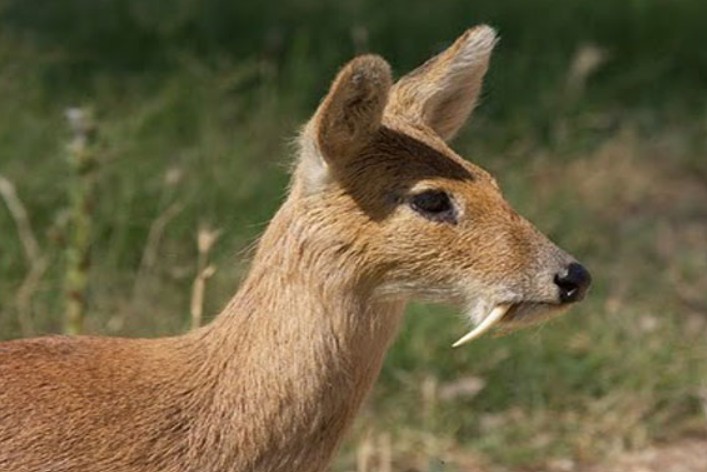Why in the News?
A recent report by the Central Zoo Authority (CZA), highlights the absence of any breeding programme for musk deer.

About Musk Deer:
- The Himalayan Musk Deer (Moschus leucogaster) is an endangered species native to the Himalayas, found in India, Nepal, Bhutan, Pakistan, and China.
- It inhabits altitudes of 2,200 to 4,300 meters, primarily in alpine forests and scrublands.
- Behaviour: Solitary, nocturnal, and territorial. Males have long, curved canine teeth and a musk gland, which is highly valued and targeted by poachers.
- It plays a key role in seed dispersal, helping maintain the balance of the alpine ecosystem.
- Threats: Poaching for their musk glands, habitat loss from deforestation, and genetic issues due to fragmented populations.
Conservation Initiatives:
- Protection Status:
- It is listed as Endangered on the IUCN Red List.
- It is listed under Schedule I of the Wildlife (Protection) Act, 1972, offering the highest protection under Indian law.
- Protected Areas:
- Kedarnath Wildlife Sanctuary: Established in 1972, covering 975 km² in the western Himalayas, crucial for musk deer conservation.
- Askot Musk Deer Sanctuary: Located in Uttarakhand, dedicated specifically to musk deer conservation.
- Himalayan Musk Project (1982): Aimed at captive breeding within Kedarnath Sanctuary but faced setbacks due to disease, snake bites, and poor survival rates. The project was shut down in 2006.
| [UPSC 2020] Which of the following are the most likely places to find the musk deer in its natural habitat?
1. Askot Wildlife Sanctuary 2. Gangotri National Park 3. Kishanpur Wildlife Sanctuary 4. Manas National Park Select the correct answer using the code given below: Options: (a) 1 and 2 only (b) 2 and 3 only (c) 3 and 4 only (d) 1 and 4 only |
Get an IAS/IPS ranker as your 1: 1 personal mentor for UPSC 2024
